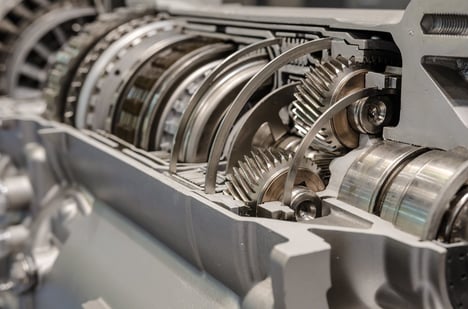What is the Actual Cost of Doing a Quality Repair?
When it comes to repairs in regards to power steering, it obviously costs the car owner money, but it also costs the shop and technician money, as well as time and labor. But how exactly? And what can you do to keep efficency and profits up? It turns out that the actual cost of doing a quality repair has everything to do with the time and parts you put into the job.
 Common power steering repairs to the actual steering unit (which includes the rack and pinion, pump or steering gear) can involve the replacement of all seals and/or mechanical wear items, such as bushings or bearings. But there are a few things to keep in mind:
Common power steering repairs to the actual steering unit (which includes the rack and pinion, pump or steering gear) can involve the replacement of all seals and/or mechanical wear items, such as bushings or bearings. But there are a few things to keep in mind:
Repairs are typically dictated by the use and environment that the vehicle is used in, as well as the routine maintenance of the steering system.
Severe temperatures may shorten the functional life of rubber seals. Heavy contamination environments (water, dirt, mud, salt and snow) may also accelerate corrosion as well as wear of the steering mechanism. This can lead to premature seal failure and mechanical components failure. Extreme mechanical component failure can, in some cases, be irreparable.
Price of Time
When a customer comes in with a repair or issue, the meter immediately starts running on the cost of the repair for the shop. It's the first direct cost, the loss of your time. This time is spent listening to your customer and discussing the resolution. Time is also spent after the repair when you follow up with the customer to ensure that everything has been resolved. While this doesn't seem like much, it quickly adds up. Say you spend on average 25 minutes per customer. If you get five new customers a day, that's over two hours you're spending a day simply speaking to a customer.
Price of Comebacks
A potential cost that gets overlooked is that of comeback business. If your techs aren't all contributing 110 percent or something gets overlooked or missed, you have the potential for comebacks, and in turn, the potential to lose loyal and repeat customers.

This can lead to a loss of money. So if a bearing's replacement, for example, isn't done properly and thoroughly, that one job could wind up costing you much more than the repair itself. A shop that does not perform quality work and/or uses lower quality products will likely experience a higher comeback/warranty claim rate. And repeat business? That's not likely.
The actual cost of a completely remanufactured steering unit can vary significantly in price. Why? Well because several factors can influence the price, including the make and model of the vehicle, where the unit was purchased, the warranty offered and the type of unit being replaced (R&P, pump or steering gear box).
Price of Unit
Remanufactured units can be acquired through most retail automotive part outlets and most often are offered with some form of warranty. Obviously, on average, units for higher-end vehicles are going to cost more. But there is a basic, rule-of-thumb order when it comes to the actual cost of remanufactured units, from lowest priced to highest they are:
-
US domestic brands
-
Asian brands
-
European brands
Price of Keeping Up
To be able to work on such brands, shops need to keep up with the latest technologies and equipment for repairing or replacing parts. While it is true that this is an additional cost, it is one that will aid in the success of your shop in the longrun. What can you do to keep on top of the changing technologies?
-
Research used units
-
Attend trade shows
-
Enroll and attend seminars and educational classes
-
Participate in SAE (Society of Automotive Engineers) training
Steering is the most critical safety feature on a vehicle. If a repair or replacement needs to be conducted on or to a power steering unit, there's no question that it needs to be done. An impeded steering system, or even worse, a system that fails completely, means the driver has no control over their vehicle's direction. Proper maintenance of the steering system with quality components is a very low investment, for the car owner and the shop, when considering the potential consequences of total system failure.


